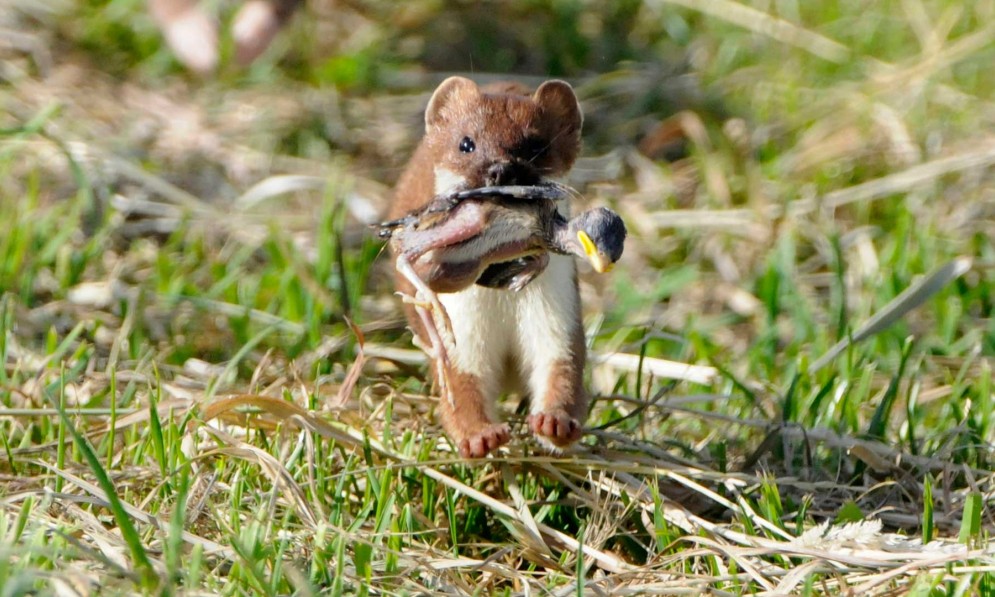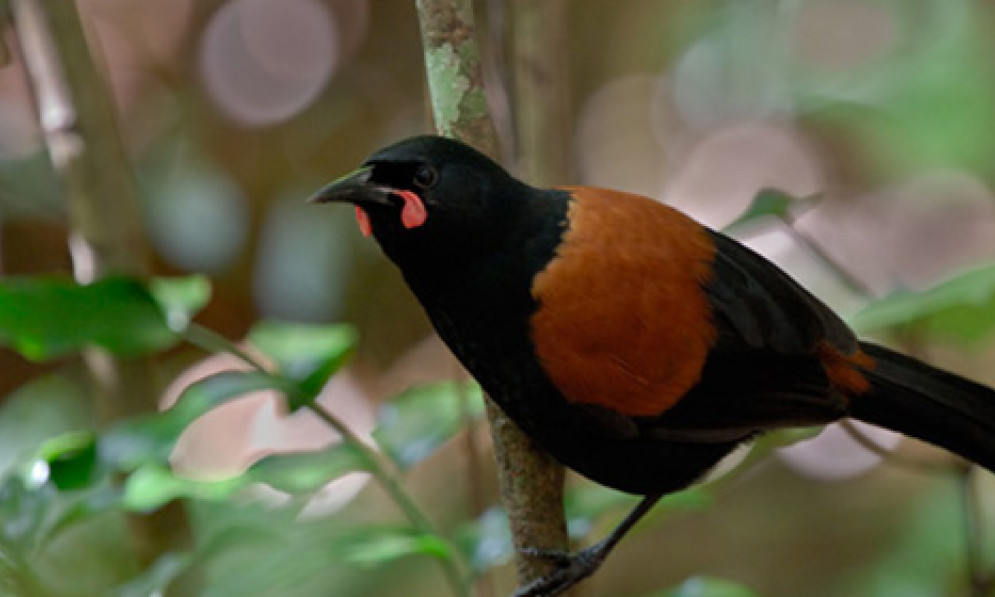Why does New Zealand need to use 1080?
New Zealand’s unique native species are in crisis. Despite small local gains, the overall situation is getting worse.
We have lost 43 species of birds in the last 800 years since human settlement. Rats and dogs arrived with Māori and the list of introduced predators has grown since European settlement to include other species of rats, stoats, weasels, ferrets, possums, hedgehogs, and cats.
Today, 80% of our birds, 88% of our lizards and 100% of our frogs are threatened with extinction. In the 1970s, brown kiwi occupied 26% of forest area, but by the early 2000s this was down to 12% and we are losing 2% of the kiwi population each year. North Island kokako were found in 9% of forests in the 1970s but now it is just 2%.
Where there is regular pest control, these species are all doing well. However, most forests are not receiving regular pest control and in these areas, time is running out.
Why can’t other pest control methods be used?
Different predator control methods all have their place, but 1080 is the only cost-effective control method for large and remote tracts of forest. Hunting, trapping and ground baiting operations are only effective in some situations. These methods are labour-intensive, expensive and effective only over relatively small areas where there is good access.
Even in these areas, well-managed trapping and ground baiting operations can be overwhelmed by natural events such as beech seed masting events which lead to huge increases in predator numbers. But well-managed aerial 1080 operations can reduce possum and rat numbers by more than 95% over large areas of rugged and inaccessible country.
We are using 1080 now, so why are our native species continuing to decline?
A third of New Zealand’s land area is public conservation land, but only an eighth of that receives any predator control. About five percent of the estate is treated with 1080 in a normal year. This was doubled in the 2014 and 2016 “Battle for our Birds” operations which responded to an explosion of predator numbers during beech masts when beech trees produced prolific amounts of seeds.
Masts lead to a dramatic increase in the numbers of rats and the stoats that prey on them. When the supply of seeds declines, predators target native birds instead.
With the limited resources available for Battle for Our Birds, DOC had to prioritise areas to receive predator control. This meant many areas where predator numbers exploded during the masts did not receive any control and native bird populations fell as a result. The Parliamentary Commissioner for the Environment, Dr. Jan Wright, found in her 2011 evaluation of 1080 that we should be using more 1080 to save our forests and the wildlife that lives in them.
What is 1080?
1080 is a manufactured version of fluoroacetate, a naturally occurring chemical produced by many plants to discourage animal browsing in Western Australia, Sri Lanka, Eastern India, South Africa and South America.
How is 1080 used?
The main use of 1080 is in baits that are designed for consumption by possums and rats. Most baits used in aerial application in public conservation forests are cereal baits dyed green to discourage birds from eating them.
GPS systems ensure baits are distributed very accurately from the air. Since the 1970s, the average quantity of bait used in forests has dropped from 40kg a hectare to less than 2kg for cereal baits – the equivalent of four baits in an area the size of a tennis court.
How effective is 1080 on rats and possums?
When correctly applied, 1080 is very effective. One aerial application can kill over 95% of possums and close to 100% of rats in the targeted area, although rat numbers can bounce back in one or two years. However, birds and other native species can benefit greatly from having one or two good breeding seasons without large-scale predation by rats.
1080 can also kill all or most stoats after they feed on the bodies of rats that have been killed by 1080.
Does 1080 remain in the environment?
1080 is biodegradable and quickly breaks down into non-toxic by-products. Trials in streams showed 90 percent of 1080 was leached from baits within 24 hours. Monitoring of public water supplies has never shown contamination by 1080.
In soil, 1080 can break down in one to two weeks in warm moist conditions, although it can sometimes take several months in extremely dry and cold conditions. Most operations are done in wet winter or spring conditions which encourages the rapid breakdown of the baits.
Does 1080 have any effect on human health?
There have been no recorded cases of 1080 operations causing harm to human health, although one hunter reportedly died at home in the 1960s from eating jam containing 1080. Long-term, low-level exposure is not harmful – a cup of black tea contains 1080’s active ingredient – fluoroacetate – at about 1.5 times the Ministry of Health’s legal limit for 1080 in drinking water.
What happens to populations of native species after 1080 operations?
During the 2014 Battle for Our Birds, monitoring of a 1080 operation over 4,500ha on Mt Stanley in the Marlborough Sounds showed a huge improvement in the success of robin and rifleman nests.
The success of 62 robin nests rose from 7% before the operation to 50% afterward and the robins produced seven times more chicks. Rifleman nesting success rose from 29% before the operation to 100%.
Does 1080 harm native animal species?
The big reduction in the number of bait used per hectare and the adoption of baits that deter birds have greatly reduced accidental by-kill of native species. There have been some deaths of monitored kea after 1080 operations in recent years. Kea repellents have been tested and greater care is being taken to ensure use the baits are not dropped on mountains above the tree line, where they can more easily be found by the inquisitive birds. Efforts to further reduce and eliminate by-kill are continuing, but the benefits to bird populations from increased nesting success following 1080 use far outweigh any accidental bird poisonings.

Credit: David Hallett
Does 1080 kill deer?
Feral deer are sometimes killed by 1080, particularly in areas where high deer numbers have eaten the forest understory, making it easier for them to find 1080 baits. Deer are a major conservation pest in New Zealand, preventing forest regrowth. In some popular hunting areas, deer repellent is used in 1080 baits.
Does 1080 kill dogs?
Dogs are particularly sensitive to 1080 and are usually poisoned when they eat the carcass of an animal that has been killed by 1080. A lot of effort is put into informing the public about where 1080 operations have been carried out so owners can keep their dogs away or muzzle them. Local vets are advised before 1080 drops are carried out, and are often able to save dogs suspected of eating 1080 by using acetamide up to four hours after ingestion.
How does 1080 affect freshwater species?
Landcare conducted a study using 10 times the number of 1080 baits that would be expected to enter streams. No detectable effect on aquatic life in streams was found, confirming other studies in New Zealand and the United States.
Does 1080 effect our insect populations?
Some insects are susceptible to 1080 baits and some trials have shown numbers can be temporarily reduced within 20 cm of toxic baits but numbers return to normal within days.
Is 1080 used in other countries?
1080 has been used on a small scale in a number of countries including Australia, the United States, the Galapagos Islands, Israel, and Japan. It is used sparingly in these countries because of the need to protect their native mammals. Most 1080 is used in New Zealand because our only two native land mammals are bats. There is no evidence they are adversely affected by 1080 use and their numbers increase where predators are controlled.
What kind of research is done into other methods of pest control?
The Department of Conservation and TBfree New Zealand spend more than $2 million annually with research organisations in investigating alternative pest control.

